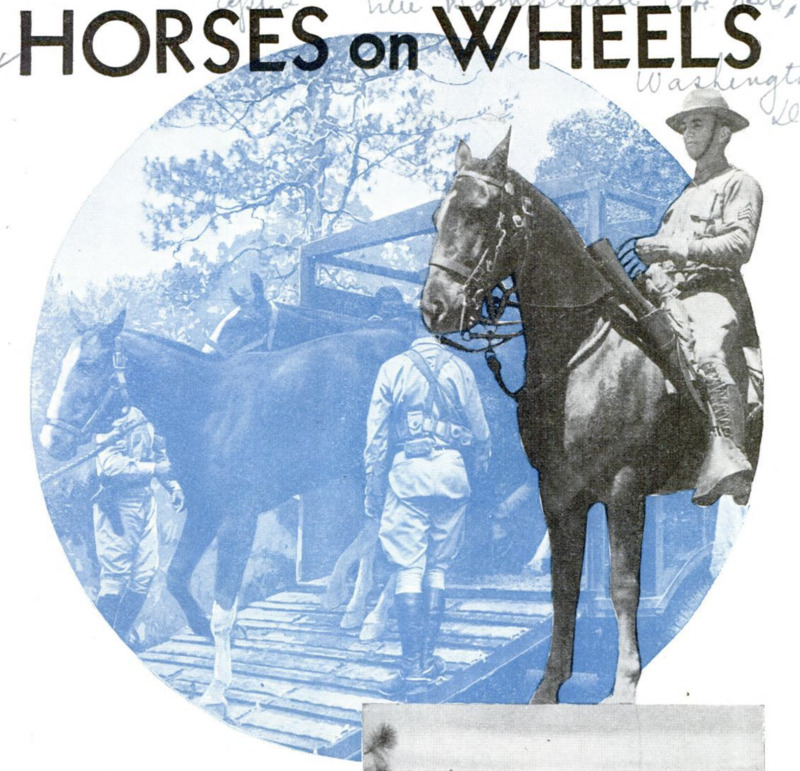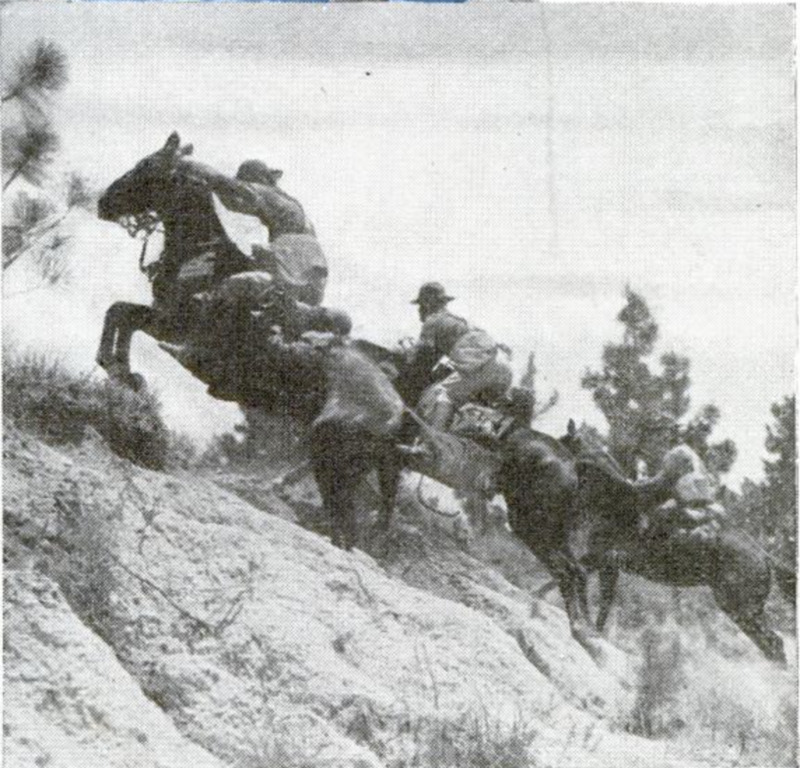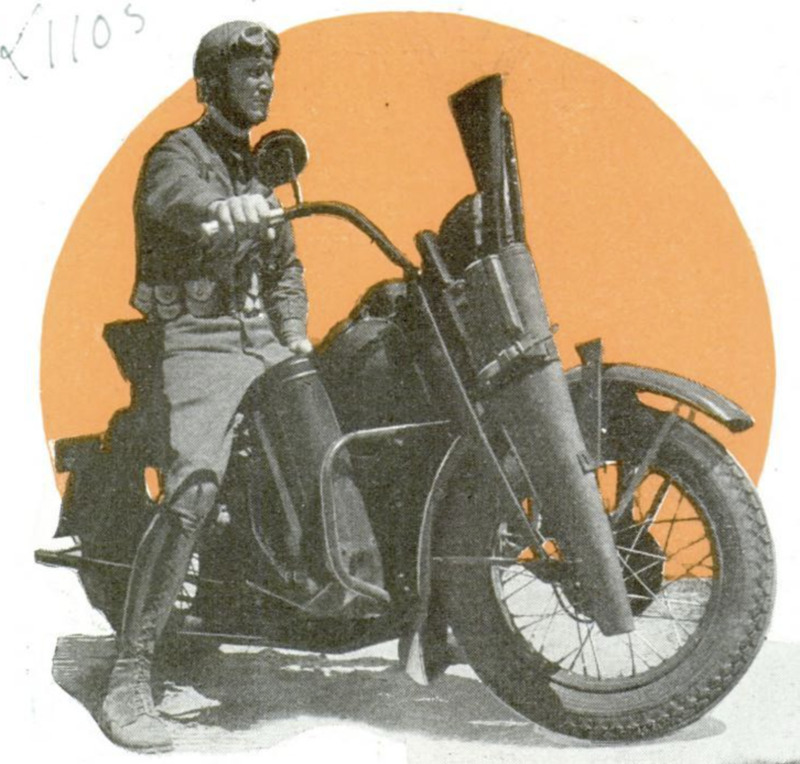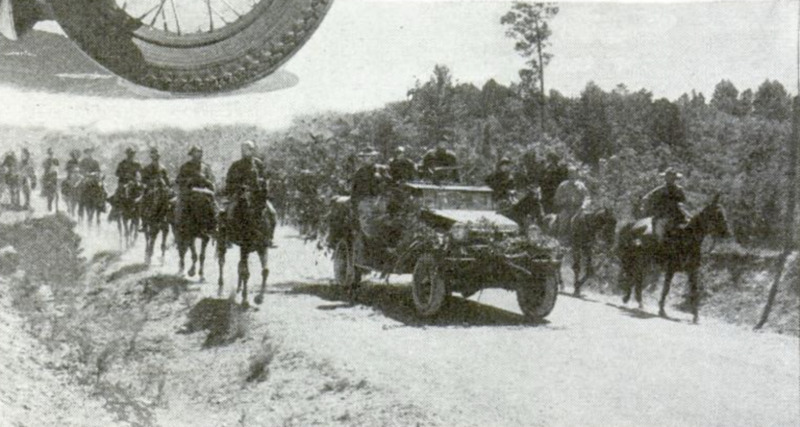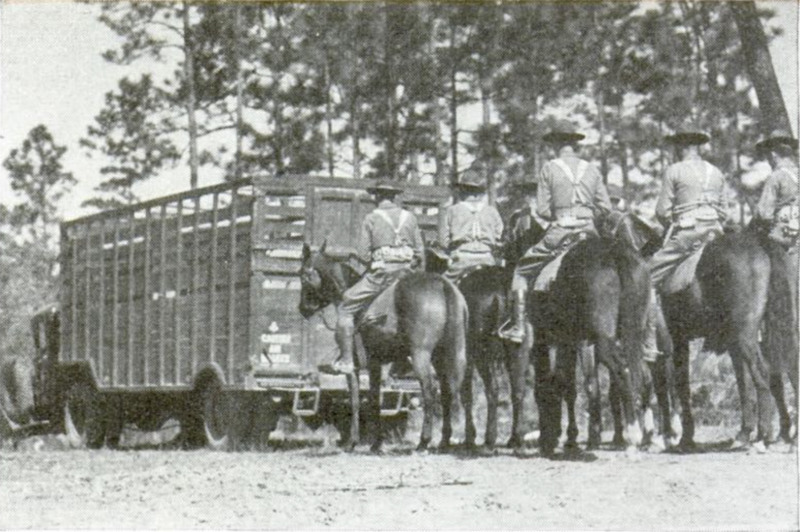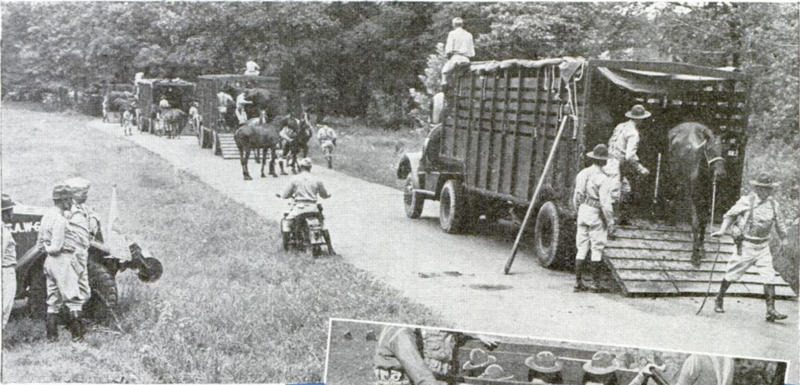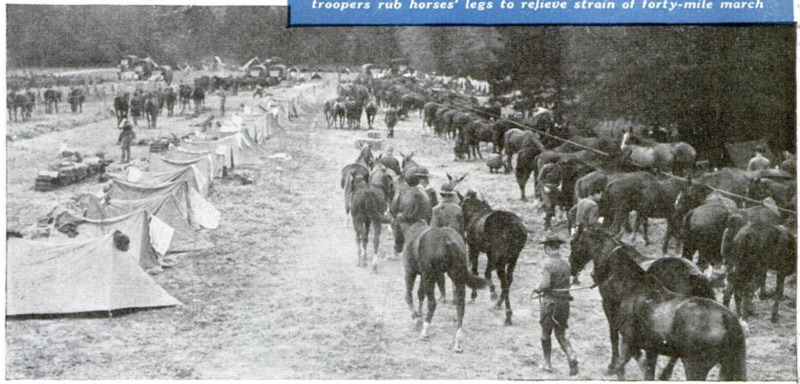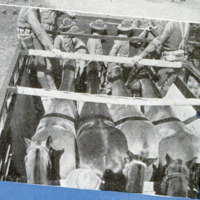-
Titolo
-
Horses on Wheels
-
Article Title and/or Image Caption
-
Horses on Wheels
-
extracted text
-
HORSES haven't quit the army. Instead of crowding the cavalry out of business, mechanization has put a new and higher value on the mounted troops. Thanks in large part to a series of tests recently completed at Fort Oglethorpe, Ga., the U. S. Army cavalry will soorf be the heaviest armed in history and will carry the strongest firing power ever known. Strangely enough, the “reconditioned” cavalry, in sharp contrast with the situation a few months ago, will rely more on its horse strength than on its more publicized mechanical units - the tanks and small scout cars. Our army has developed a new idea in warfare - “horses on wheels.” Tested first by the Sixth Cavalry at Fort Oglethorpe, the idea has been developed into a vital part of regular cavalry procedure. Horses, equipment and troops, are placed in truck-trailer combinations for transportation over long distances. Once at their destination, the animals are removed from the trailers and then used in a military way. Under such conditions the horses are fresh and can be loaded at once with war equipment and food supplies, ready to penetrate mountainous, swampy or heavily timbered areas which are impenetrable by mechanized vehicles. This situation would be equally true whether our army fought at home or abroad. The modern horse outfits have many a spot in this hemisphere they can still call their own: in the swamps of the deep south; in the arroyos of the Mexican border; in the Rockies and Appalachians. The new units would be valuable wherever good roads are scarce; for without good roads tremendous supplies of gasoline and oil for mechanical fighting units would be difficult to secure. Besides the unit at Fort Oglethorpe, the Fourth Cavalty at Fort Meade, S. D., has also been equipped with a full component of horses on wheels, and in the immediate future seven additional regiments of this type are contemplated. Together they will have a personnel of 10,000 men and 700 horsetrucks. There will be one regiment for each of the nine corps areas. Incidentally, these figures are over and above the requirements of the major elements of the U. 8. cavalry divisions. Total strength of all our cavalry within the next few months will be 35,000 men and 1,700 officers. “Corps Cavalry Reconnaissance Regiment” is the official title of the new units, Each regiment includes seventy-six trucksfor carrying horses, sixty ordinary trucks for carrying equipment, ninety-two scout cars and 247 motoreycles. Each horse truck carries one complete cavalry squad, consisting of eight men, eight horses and all saddle equipment, personal equipment and weapons. The weapons comprise 295 machine guns of .30 caliber; 125 anti-tank machine guns; 340 sub-machine guns; twelve anti-tank guns; 1,550 pistols, and 436 rifles. In the theater of war the horses easily will be able to carry this equipment. The maximum load placed on an average army horse is 250 pounds. The new units give our military high command a strategic mobility - the ability to cover long distances, to get horses, equipment and men quickly from one battlefield to another. Once on the battlefield the horse is the most sure-fire mobile ground instrument available. The big advantage of the horse-truck idea is that it brings horses on the battlefield fresh so that a cavalry mounted element can keep up with the fast-moving tempo of modern warfare. In the field, of course, the horse supplements the tank, following up closely and seizing localities overrun by tanks. Today we maintain in our regular cavalry only 10,000 horses; at the end of the World War the figure was 30,000. However, in the army’s reorganization plan, cavalry is being brought back to its war- time strength of 20,000 horses and 35,000 men. Very soon our cavalry will consist of about sixty per cent horses and forty percent motor vehicles. This flexible combination of horse and mechanized cavalry will give a corps commander a means of securing ground information of enemy forces in almost any situation, regardless of weather or the state of the roads. An army corps is composed normally of three divisions, with corps troops such as heavy artillery, engineer, quartermaster and signal corps added in order to provide a balanced fighting force. The cavalry reconnaissance regiment henceforth will be considered a regular part of normal corps troops. Army horses must undergo the same rigorous training as their riders. Tests prove that an army horse in rough terrain can average 100 miles in twenty-four hours, fully equipped for battle. He can do 150 miles in forty-eight hours - no more. He can average fifty miles a day for ten days and forty miles a day indefinitely. A well-trained horse can average a much faster rate in dense woods and mountaious regions than can any mobile machine. The army’s official horse-fighting unit is a squadron, consisting roughly of 450 men, under a major. The squadron in turn is split up into three troops of 150 men each, with a captain in charge of each troop. The troops are organized under three rifle platoons and one machine-gun platoon. Cavalry is the major element which accords security to the larger groups by reconnaissance, counter-reconnaissance, screening and covering. Reconnaissance is the job of finding out where the enemy is and what he’s up to; counter-reconnaissance is preventing the enemy from finding out what your troops are up to. Screening and security is to permit the uninterrupted advance of the main body and to prevent a surprise hostile attack. Once the main warring bodies come into contact, American cavalry with its preponderance of firing power is available to participate in the battle proper; and is used customarily against the enemy’s flanks and rear. In case of a retirement, the cavalry assumes the brunt of delaying hostile pursuit by fighting the rear guard action. Most Americans seem to have the mistaken notion that the horse can't exist on the modern battlefield. He couldn't, if he were used in the old close or massed formation, for he'd be an easy target. But with modern wide apart formations and his ability to move rapidly out of range, or into concealment, the horse makes far less of a target than a slower component. That the horse can not only live on the battlefield but that he is of great value in modern warfare, is evidenced by the conquests of the German army in Holland, Belgium and France, In these maneuvers the Nazi troopers are reported to have utilized no fewer than 791,000 horses, (many for draft purposes) undoubtedly the largest cavalry force ever used. It is interesting to note that the Germans don't carry a fifth as many machine guns in their cavalry as we do. The American cavalry carries the strongest firing power the world has seen.
-
Lingua
-
eng
-
Data di rilascio
-
1941-03
-
pagine
-
371-373, 114A
-
Diritti
-
Public Domain (Google digitized)
-
Archived by
-
Enrico Saonara
-
Marco Bortolami (editor)
